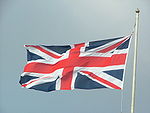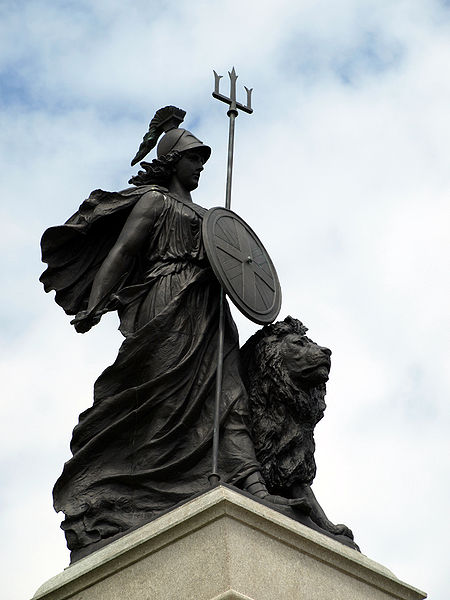2. Paco didn't know too much about the United Kingdom
In August 55 B.C. (55 years before Jesus was born) the Roman general, Emperor Julius Caesar invaded Britain. He didn't take with him too many Roman legions, only two. He didn't stay for longer in Britain. After winning several battles against the Celtic tribes (Britons) in south-east England he returned to France.
Second invasion - Caesar's second raid.
|
|
| By Matthias Kabel. GNU Free License |
Third and final invasion.
Nearly one hundred years later, in 43 A.D. (43 years after Jesus was born), Emperor Claudius organized the final and successful Roman invasion of Britain. General Aulus Plautius led four legions with 25,000 men, plus an equal number of auxiliary soldiers. They crossed the Channel in three divisions, landing at Richborough, Dover, and Lympne.
Many tribes didn't try to resist the Romans although others did. It took about four years for the invaders to finally gain control over southern England, and another 30 years for them to conquer all of the West Country and the mountains and valleys of Wales.
How long did the Romans stay in Britain? The Romans remained in Britain from 43 AD to 410 AD. That is almost four hundred years (four centuries). They left Britain because their homes in Italy didn't have any protection for the fierce tribes and every soldier was needed.
Try to answer these questions:
| 1. |
Where can you see red double-decker buses? |
|
|
|
| 2. | What does a typical London taxi look like? |
| |
|
| 3. | What do British post and telephone boxes have in common? |
| |
|
| 4. | What is the traditional English food and drink? |
| |
|
| 5. | Name England’s national game. |
| |
|
| 6. | Why is a red rose important in England? |
| |
|
| 7. | The word “pub” is short for...... |
| |
|
| 8. | What do the British usually drink in pubs? |
| |
|
| 9. | What are their opening hours? |
| |
|
| 10. | Are the names of the pubs important? Give some examples. |
 |
| By Stefano Brivio. Creative Common |
|
|
| By Mageslayer99. Creative Commons |
Britannia is a national
personification of the United Kingdom, originating from Roman Britain. Britannia is
symbolised as a young woman with brown or golden hair, wearing a Corinthian helmet
and white robes. She holds Poseidon's three-pronged trident and a shield, bearing the Union Flag. Sometimes she is
depicted as riding the back of a lion. At and since the height of the British
Empire, Britannia has often associated with maritime dominance, as in the
patriotic song Rule, Britannia!. The lion symbol is depicted behind Britannia on the British fifty pence coin and one is
shown crowned on the back of the British ten
pence coin. It is also used as a symbol on the non-ceremonial flag of the British Army. The bulldog is sometimes used as a symbol of
the United Kingdom and has been associated with Winston Churchill's defiance of Nazi
Germany.
From Wikipedia
Would you like to listen to the British national anthem? Here you have.

